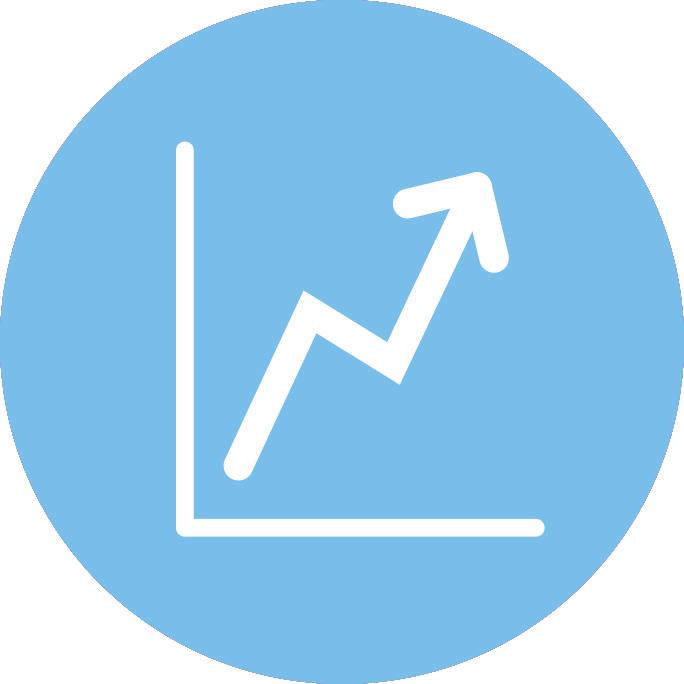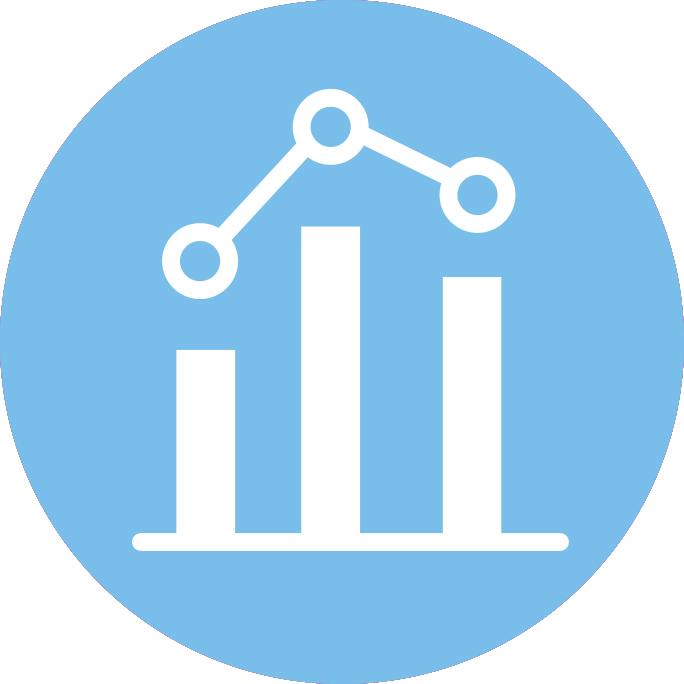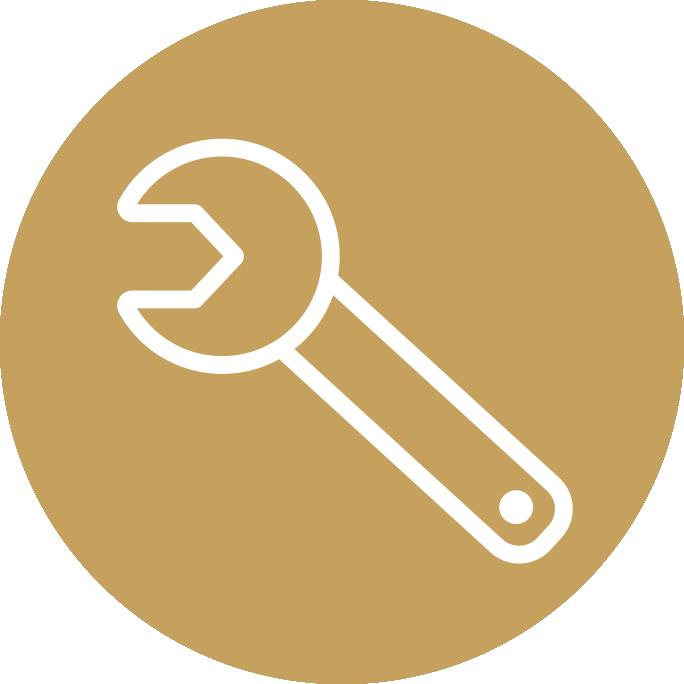In this blog, we will explore the different levels of reporting and the rich reporting features that Odoo offers. We will also provide tips on how people in different roles in the organization can make use of Odoo reports. And finally, we give tips on how to get started with Odoo reporting.
Four ways to make the most of Odoo reporting
There are four levels of reporting that a company can use. The simplest is to examine what has happened with individual or multiple documents, such as sales orders. At the most advanced level, reports are used for business forecasting and decision making. At what level is your company currently using reports?

Activity-based reporting
Viewing individual lists or pivot views, seeing what has happened e.g. in the sales pipeline, order book, hours worked or sick leaves, and so on. Odoo's standard reports are available in almost every module and can be customized.
Aggregated reporting combines data
Odoo collects data from several different sources within Odoo (different modules). You can look at the time spent on sales versus actual results, examine where manufacturing costs are incurred or find out if your customer promises are being met in terms of delivery times. You can even build such a report yourself, e.g. using the Odoo Dashboard.

Metrics and KPIs
Various metrics and Key Performance Indicators (KPIs) help you to monitor the achievement of your objectives, for example in terms of sales, budgeting or production. Data can be combined from different sources. Tools such as Odoo Spreadsheet and Dashboards can be used.

Forecasting
Forecasting is the highest level of analytics. Once the metrics and KPIs are correctly defined, you can ask the system "Do I dare to recruit more people" or "Is now the right time to buy products into stock". Forecasts can be made either from standard Odoo reports, Odoo Spreadsheet or additional modules developed by e.g. SprintIT or other Odoo partners.
Odoo's reporting benefits: save time and money, always up to date

Odoo provides real-time data
Odoo provides direct access to business data without the need to synchronize or transfer data to external systems. For example, sales orders, stock balances and project progress are updated in real time, enabling fast and accurate data-driven decision-making.

All your information in one system
Standalone BI tools often require data to be imported from multiple sources. Using separate systems can lead to inaccurate data and synchronization problems. With Odoo, all your data - sales, inventory, customer data and financials - is ready in one platform.

Versatile tools as standard
Odoo comes with a wide range of reporting tools, including pivot tables, graphs, dashboards and the integrated Odoo Spreadsheet. These allow you to visualize and analyze your data without any separate licence costs.

Odoo is cost-effective
Stand-alone BI systems can be expensive. Odoo offers the same capabilities - and often more - as part of your low-cost ERP license, so you save not only money, but also time by having everything in one place. However, a separate BI system can make sense if you need to consolidate reporting data from multiple systems into one place.
Odoo supports decision-making throughout the organization
This allows different roles to benefit from Odoo's reporting tools:
CHIEF EXECUTIVE OFFICER
Odoo guides the CEO in the right direction
Odoo reporting helps the CEO in strategic decision-making. You will track the forecast turnover of your projects, make decisions on sales and recruitment and prepare materials for the next board meeting. See information on company performance in real time and react quickly to changes.
OPERATIONAL MANAGEMENT
Odoo helps you to achieve your goals
Odoo reporting helps you streamline your business processes. As a team leader, you monitor employee hours and availability for the following month. Identify bottlenecks and optimize the use of resources, whether they are people or machines. Improve team performance by tracking teams' achievement of goals and providing them with data-driven feedback.
CHIEF FINANCIAL DIRECTOR
Up-to-date and accurate financial information directly from Odoo
Odoo reports help you better manage your finances. In Odoo, accounting is highly automated and always up-to-date, so financial reports always reflect the current situation. Odoo makes it easy to track expenses and enables accurate forecasts that take into account even the most recent events. Odoo's Spreadsheet and Dashboard modules provide excellent tools for budgeting and financial analysis.
- Create an annual plan that combines sales, cost and resource forecasting.
- Integrate the budget into your dashboard, where the whole team can see the real-time situation.
- Use automated calculations and formulas to evaluate different scenarios, including best case and worst case projections.
With Odoo, you also get a comprehensive cash flow forecast that can take into account the impact of sales and purchase orders on the cash flow. For your convenience, you can get financial statements with balance sheet breakdowns directly from Odoo. In addition to automation, the month-end changeover is supported by various audit reports.
Payroll is also available in Odoo, which handles the creation of payroll and accounting data, the payment of salaries and the sending of various declarations to the tax authorities.
SALES DIRECTOR
Data-driven sales with Odoo
With Odoo's customizable reports, you can effectively manage sales by analyzing sales data by salesperson or team. Set monthly sales targets for your team and monitor sales forecasts and budgets, which are updated in real time. Analyze the effectiveness of different sales channels, compare the productivity of customer segments and produce sales forecasts and budgets that are updated in real time. Communication both within the sales team and with prospects is handled conveniently directly from Odoo CRM.
WAREHOUSE MANAGER
Odoo's real-time inventory tracking gives the warehouse manager full control over the inventory
With Odoo, you can seamlessly combine inventory data and sales history. You define criteria for stock movements, such as sales volumes, alerts or automatic purchases. You ensure that stock balances are sufficient and turnover rates remain at a good level. Odoo predicts your needs and suggests purchases so that you don't sell non-items or fill shelves with slow-moving products.
With Odoo, you can see the status of all your stocks in real time - down to a single product SKU (Stock Keeping Unit). Whether it's inbound or outbound logistics, Odoo tells you what products are coming in and what's going out. Odoo helps you order the right products at the right time and make the necessary additional orders to suppliers through logistics integrations. With Odoo, inventory values and balances are always kept up to date.
Discover Odoo's versatile and easily customizable reporting features - then you might wonder why you needed those separate and expensive BI software!
How do you get started?
If you are already an Odoo user, check the following to make sure you get the most out of the reporting features:
1. Upgrade to the latest version of Odoo: Make sure you have the latest version of Odoo, which includes all the latest tools and most convenient reporting features, such as Odoo Spreadsheets and Dashboard.
2. Decide what information you need. Check out Odoo's standard reports and customize the ones that best suit your work. Save frequently used reports either to Dashboard views or as favorites in your preferred app.
3. Make sure your own data and basic information is in order, otherwise the data in the reports will not be relevant.
4. Explore the possibilities of Odoo's standard reports before building your own reports
5. Set goals and monitor their achievement.
6. Use and share. Customize your Dashboard to show the data that is relevant to your business and share the reports with the users you want.
7. Get help: if you need help to effectively use the reporting features of Odoo, contact the experts at SprintIT.
By choosing Odoo, you save time, money and resources by eliminating unnecessary external tools. With Odoo, all information is available in real time.
